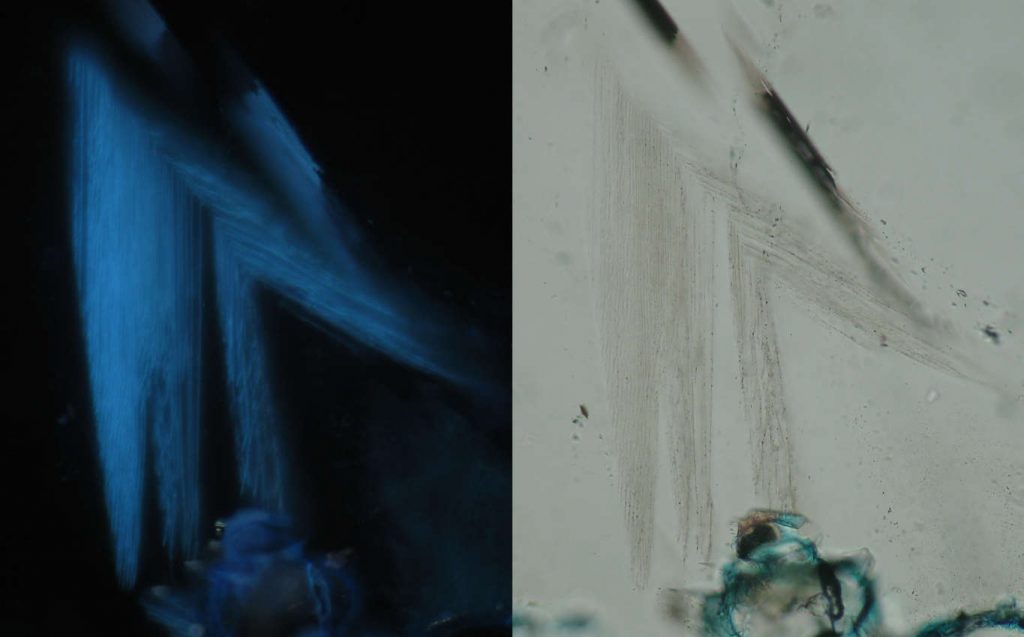We use epifluorescence predominantly to investigate the character and distribution of hydrocarbons trapped within fluid inclusions. Our system is equipped with a Zeiss HBO UV illuminator and “Epiplan Neofluar” objectives covering a wide range of magnifications (x1.25 up to x100). Using the digital camera attached to this microscope we are able to capture images of specific inclusions under the very low light levels that are commonly encountered during epifluorescence imaging.

The colour of the fluorescence is a reflection of the composition of the hydrocarbon, and can be used in a qualitative sense to approximate oil API gravity. Where samples have seen multiple generations of hydrocarbon of differing compositons / maturities, epifluorescence can be used to differentiate between different generations of fluids. This, combined with microthermometric analysis of the fluid inclusions, can be used to reconstruct filling / fluid histories.


